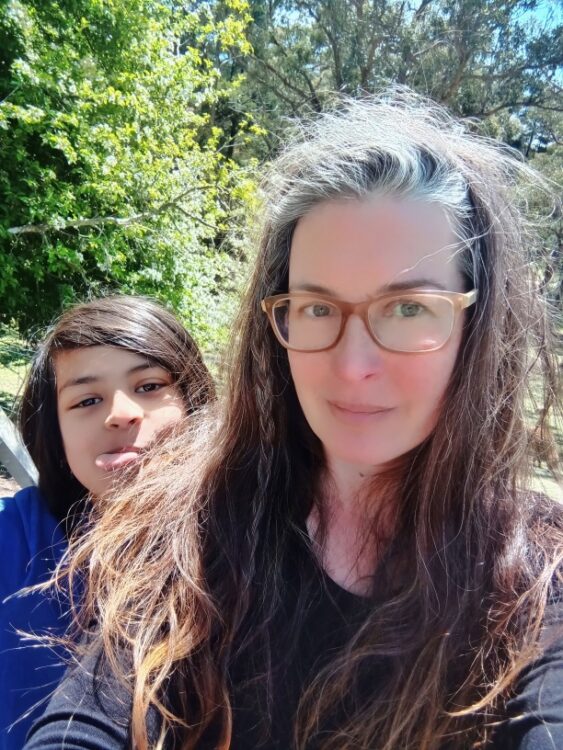On Sunday, the UCLN will launch a project designed to establish new – and enhance existing – pollinator-friendly habitats and food sources for bees, butterflies, birds and other pollinating insects and wildlife through the Upper Campaspe Catchment
Hi everyone
My name is Rebekah Ritchie and I am the Landcare Facilitator for the Upper Campaspe Landcare Network. I have really enjoyed the ten months I have been with the UCLN, and my only frustration has been not getting to meet all the UCLN member groups face-to-face during that time!

I am a Macedon Ranges local, living on 10 acres of bush with my husband (vintage motorbike nut) and nine year old son (interested in EVERYTHING including ecology), too many pygmy goats and alpacas, a ridiculous number of posh chickens and geese, guinea fowl, dogs, cats, echidnas, kangaroos, wombats, antechinus, snakes, lizards, frogs, insects and many beautiful indigenous birds!
In my previous work life, I was the manager of Melbourne Water’s Healthy Waterways Waterwatch Program and spent time at both Moonee Valley and Hume City Council’s as an environment officer. I also worked with the State Government as a Green Corps Team Leader, working on projects at Hanging Rock and along Jacksons Creek.
As an ecologist, I am obsessed with all the miraculous beings that make up our ecosystem, including those incredibly important smaller beings that usually get overlooked! Many of these beings are recognized pollinators and keep a healthy ecosystem running! While we do not have exact figures for the Upper Campapse (yet), Australia has around 2,000 native bee species, all of which are important pollinators. There are also a couple of thousand butterfly, wasp, fly, moth, beetle, thrip and ant species, some of which are documented pollinators, alongside birds, bats and some smaller mammals.
Worldwide 90 percent of flowering plant species depend at least partly on animal pollinators for reproduction. Pollinators are declining in both diversity and number – facing threats including habitat fragmentation, harmful chemicals, invasive species, and of course, climate change.
In basic terms, a decline in pollinator species means a decline in natural ecosystems and food production. At this stage, we do not have a lot of information on the ecology of many of our smaller creatures, what flowers they pollinate, or where they are found.
In line with all of that, I am excited to announce a new project that the UCLN will be organising throughout the Upper Campaspe Catchment and that we would LOVE you to be a part of.
During Pollinator Week (8 to 15 November 2020), the UCLN will be launching our Pollinator Corridor Project – a project designed to determine species diversity, dispersion, and relationships and to enhance habitat and habitat connectivity!
So, I hear you ask – What are Pollinator Corridors???
Pollinator Corridors are connecting patches of vegetation of various scale designed to help indigenous pollinators move through the landscape. They are not intended for the most easily recognised pollinator, European honeybees, which are an introduced species that primarily pollinate agricultural crops. Instead, they are designed for native species—bees, insects, butterflies, moths, birds, and bats among others—that keep local ecosystems running.
Pollinator Corridors are akin to biodiversity corridors designed for larger species, but Pollinator Corridors do not necessarily restore or protect habitat; instead, they can be designed and built in the middle of landscapes dominated by humans.
Pollinator Corridors essentially link pollinator habitat. Isolated gardens of pollinator-friendly plants are not as useful to pollinators as are continuous Corridors between larger habitats. Our smaller indigenous pollinators can only fly about 50 metres at a time. Pollinator Corridors help smaller pollinators disperse more efficiently and contribute to a more diverse and healthy community of species.
Individual contributions to Pollinator Corridors can be as small as a potted plant or as large as a field! The scope is only limited by your space, time, and capability.
